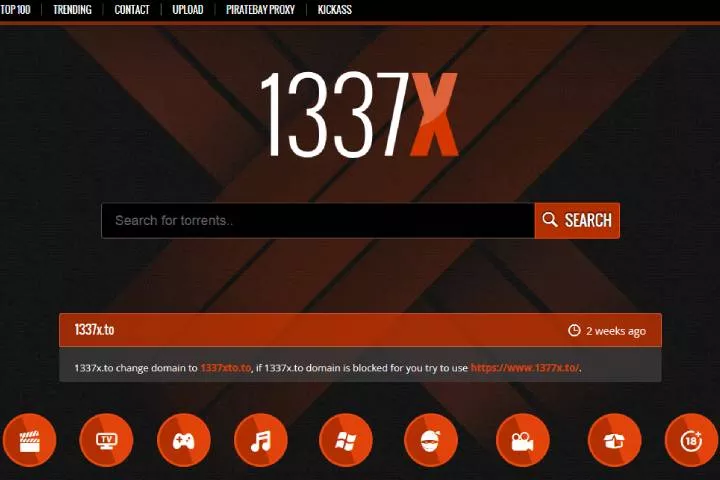Business
A Simple Instance Of How The GST Regime Operates
A Simple Instance Of How The GST Regime Operates, The pre-GST regime of Indirect Taxation in India was characterized by a lot of red tape and complexity

The GST regime has been a game-changer in the sphere of Indirect Taxation in India. The pre-GST regime of Indirect Taxation in India was characterized by a lot of red tape and complexity.
There was a multitude of taxes and cesses which were in operation and had to be taken care of in a haphazard and disconnected manner by businesses. The actual rate of taxes on many products was almost impossible to determine for the average consumer, which was terrible for transparency.

With the introduction of the GST system, all of those taxes were subsumed under the Goods and Services Tax, with a few exceptions. This drastically cut the number of taxes that businesses and consumers had to keep track of.
The Goods and Services Tax also was a game-changer in the field of Information Technology concerning taxation. Previously, there was almost no way for the Government to track down all of the transactions and invoices which were generated throughout business every day.
But, with the introduction of the GST, the entire system has now migrated online, so a GST invoice is now online and easily trackable by both the Government, as well as the business on the GST portal, which runs on the GSTN (Goods and Services Tax Network). This has increased transparency and compliance.
The GST is a comprehensive indirect tax affecting almost all goods and services in India, barring few items which have been kept outside the purview of the tax. It has several features which are illustrated below:
Table of Contents
1.Basic Overview:
The GST, as mentioned above, is a comprehensive tax, a single tax that has subsumed almost all of the taxes and cesses operating under the previous tax regime. GST was created to simplify procedures and create a transparent system of Indirect Taxation.
To this end, the GSTN Information Technology network was created to make the entire system online. Various forms need to be filled by businesses that are dependant on the type of business and turnover.
Unlike the pre-GST regime, a GST invoice generated in the course of business needs to be uploaded onto the GSTN network by both the supplier and the dealer who purchases the goods to be sold to the consumer. This ensures compliance.
2.Controlling Body:

The GST system is controlled by a unified body called the GST Council. This body monitors the GST to ensure everything works smoothly. From time to time, the council publishes revisions to the tax structure when it feels that certain elements need to be revised. This is usually done in response to market conditions or anticipation of future market conditions.
3.GST Structure:
The GST is structured into slabs. There are four underlying slabs under the GST regime. On top of that, there is a fifth slab, which is essentially an exempted item slab, which includes items that have no GST attached to them.
The 4 major slabs are :5%, 12%, 18%, and 28%. Everyday items are placed in the lower slabs while sin goods and luxury items fall under the highest 28% slab. Some examples of items within the various slabs include vegetables, milk, honey, bread, etc. under the exempt category.
Items like apparel costing less than INR 1000, frozen vegetables, coffee, tea, etc. under the 5% category. Frozen meat, butter, cheese, ghee, etc. under the 12% category. Cakes, pasta, biscuits, mineral water, etc. under the 18% category. Things like pan masala, aerated drinks, aftershave, etc., fall under the highest 28% category.
This list keeps on changing, and for the latest information, official records are available with the current GST rates in effect.
4.Forms:
As briefly mentioned above, there are various forms under the GST system which need to be filled when filing returns. The dates in which those forms are due are also published on the official GST council website.
The current forms need to be filed range from GSTR-1, which details all outward supplies of goods and services, GSTR-2, which describes all of the inward supplies of products and services right through GSTR-9, which is the annual return to be filed by registered taxpayers. The GST council website has detailed FAQs regarding the filing of the forms.
The GST forms will be changing from April of 2020, and many of the ways will be done away with in favor of new forms, so businesses must keep track of the changes being announced by the GST council.
Conclusion:
The GST regime was created to ensure tax compliance as well as tax transparency in the Indian economy. By employing digital tax returns and online GST invoice processes, the Government has tried to create a simplified tax regime to replace the complicated old one.
There are many more aspects of GST that can be reviewed online on the official website as well as other websites containing updated information.
Business
Navigating the Process of Selling Deceased Estate Shares
This article aims to provide a comprehensive guide to selling shares from a deceased estate. Process of Selling Deceased Estate Shares.

Table of Contents
1. Understanding the Basics of Selling Deceased Estate Shares
Dealing with a deceased estate can be a challenging and emotional process, especially when it comes to handling financial assets like shares. This article aims to provide a comprehensive guide to selling shares from a deceased estate.
2. What are Deceased Estate Shares?
Deceased estate shares refer to the stocks and shares that were owned by an individual who has passed away. These shares become part of the deceased’s estate and are subject to the terms of their will or estate plan.
3. The Importance of Valuing the Shares
The first step in selling deceased estate shares is to obtain a current valuation. This valuation is crucial for several reasons: it helps in distributing the estate among beneficiaries, it may be necessary for tax purposes, and it gives an idea of the market value of the shares.
4. Legal Requirements and Executor Responsibilities
The executor of the estate plays a pivotal role in the management and distribution of the deceased’s assets. This section will cover the legal responsibilities and steps the executor needs to take to lawfully sell the shares.
5. Obtaining Probate
Before any action can be taken with the shares, it’s often necessary to obtain probate. Probate is a legal process that confirms the executor’s authority to deal with the deceased’s assets.
Transferring Shares into the Executor’s Name
Once probate is granted, shares may need to be transferred into the name of the executor. This process varies depending on the company and the type of shares.
6. The Process of Selling Shares
After completing legal formalities, the executor can proceed with selling the shares. This section will outline the steps involved in this process, including choosing a brokerage or financial service, understanding market conditions, and making informed decisions.
Deciding on the Right Time to Sell
Timing can significantly impact the returns from selling shares. Executors need to consider market conditions and financial advice to determine the best time to sell.
Completing the Sale
This subsection will detail the actual process of selling shares, including placing orders, handling transaction fees, and ensuring all regulatory requirements are met.

7. Navigating Tax Implications and Reporting
Managing tax obligations is a critical aspect of selling deceased estate shares. This section will explain the potential tax implications and the importance of accurate reporting for both capital gains tax and inheritance tax considerations.
Understanding Capital Gains Tax Responsibilities
When shares are sold, any profit made from the time of the deceased’s passing to the sale date may be subject to capital gains tax. Executors need to be aware of these implications and plan accordingly.
Inheritance Tax Considerations
In some jurisdictions, the value of the deceased estate’s shares might impact inheritance tax calculations. It’s essential for executors to understand these aspects in order to ensure compliance with tax laws.
8. Common Challenges and How to Overcome Them
Selling deceased estate shares can present unique challenges. This section will discuss common issues such as disputed wills, fragmented information about the shares, and market volatility.
Dealing with Disputed Wills and Beneficiary Disagreements
Disputes over the will or disagreements among beneficiaries can complicate the process. Executors must handle these situations delicately and legally.
Managing Market Volatility
Shares can be subject to market fluctuations. Executors should be prepared for this volatility and may need to consult financial advisors to navigate these waters effectively.
9. Tips for Executors Handling Deceased Estate Shares
This section will provide practical advice for executors, including the importance of seeking professional advice, keeping thorough records, and communicating clearly with beneficiaries.
Seeking Professional Financial and Legal Advice
The complexity of selling shares from a deceased estate often necessitates professional advice. This can range from legal counsel to financial advisory services.
Record Keeping and Communication with Beneficiaries
Maintaining transparent and thorough records is crucial. Executors should also prioritize clear and consistent communication with all beneficiaries to avoid misunderstandings.
Conclusion
Selling shares from a deceased estate is a responsibility that requires careful attention to legal, financial, and interpersonal dynamics. By understanding the process, staying informed about tax obligations, and tackling challenges head-on, executors can fulfill their duties effectively and respectfully.

 Instagram3 years ago
Instagram3 years agoBuy IG likes and buy organic Instagram followers: where to buy them and how?

 Instagram3 years ago
Instagram3 years ago100% Genuine Instagram Followers & Likes with Guaranteed Tool

 Business5 years ago
Business5 years ago7 Must Have Digital Marketing Tools For Your Small Businesses

 Instagram4 years ago
Instagram4 years agoInstagram Followers And Likes – Online Social Media Platform





















